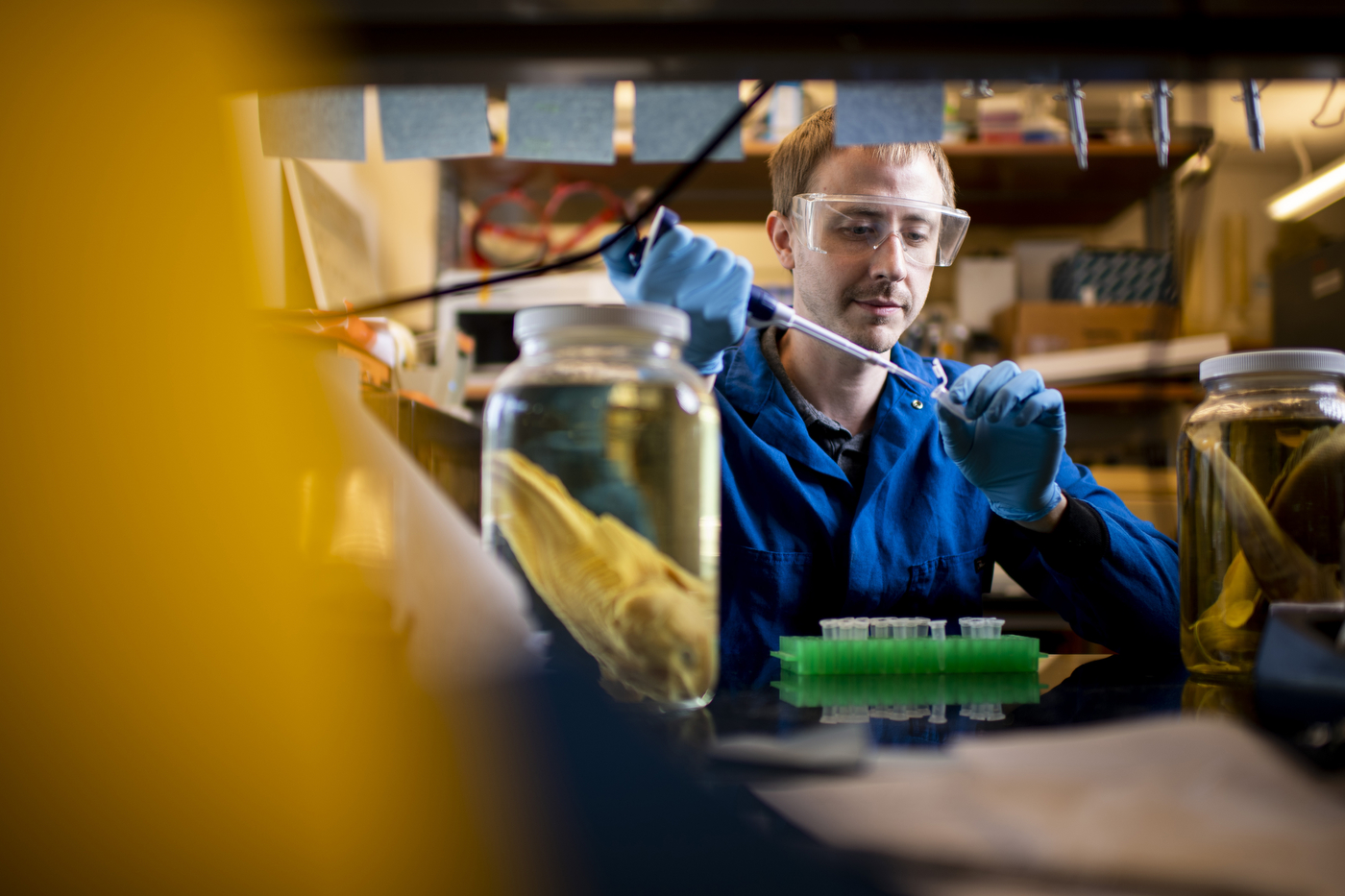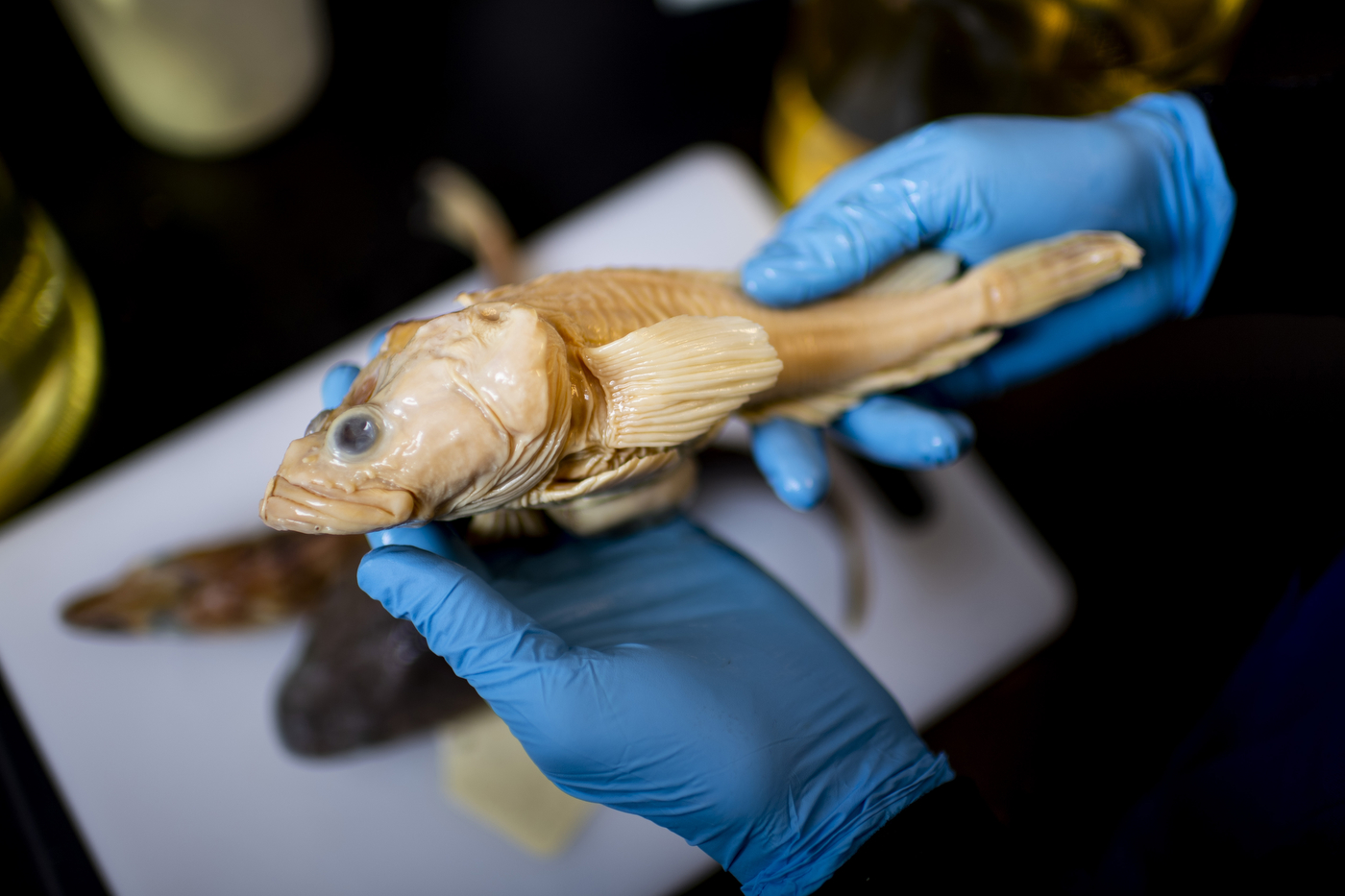Roughly 40 million years ago, the waters around Antarctica were warm enough to swim in.
The mild temperatures allowed a wide variety of fishes to flourish in the Southern Ocean until shifting continents and a changing climate caused the ocean to cool. As the glaciers grew and their fellow fish fled, one group, the notothenioid fishes, took the opportunity to diversify and expand into every available habitat.
What made these fish able to thrive in their new, harsh environment? According to a recent study from Northeastern’s Marine Science Center, notothenioids had previously gone through a period of genetic diversification, before the waters turned icy. When the climate changed, they were ready.
“It’s an interesting ecological story,” says Jacob Daane, a postdoctoral researcher at Northeastern and lead author on the paper. “It helps inform our understanding of how species diversify in response to environmental change.”
And, because many of these same traits are considered serious diseases in our own species, their work can also help us understand more about human health.



An excess of diversity
“The ancestral notothenioid was a bottom-dweller,” says H. William Detrich, a Northeastern professor of marine and environmental sciences. It had dense bones and lacked the gas-filled pouch that most fish have to let them float effortlessly in the water.
Modern notothenioids have fragile, light bones and more oily bodies to help them live and eat at different levels in the water column. By sequencing specific sections of the genomes of more than 40 notothenioid species, the researchers were able to analyze when these mutations started to occur. To their surprise, they found that these traits were already floating around in the genetic pool long before the temperatures dropped.
“Before their competitors were essentially chased away, the Antarctic species had already evolved skeletons that were considerably less dense,” Detrich says. “There was a lot more variation present in these fish prior to glaciation than one would expect.”
Some time before the climate changed, the number of variations in the notothenioid gene pool increased. Genes were mutating faster than usual, leading to an excess of genetic diversity. Researchers aren’t sure what caused this surge, but it gave the fish a competitive edge when they suddenly needed to adapt to severe environmental changes.
“They were primed, in a way, to exploit a lot of opportunities that arose in response to this climate event,” says Daane.
As our current climate continues to change, studies like this one can help researchers predict how different species will handle the new normal. It highlights the importance of understanding not only where an animal lives now, but how its underlying genetic diversity may help it adapt in the future.
“In order to predict how organisms are going to respond to climate change in the ocean, we need to know about their genetic and genomic history,” says Detrich. “Is there enough mutation occurring in these fish, and enough generations for the fish to exploit that variation, so that they will evolve and deal with the warmer climate?”
Fragile bones, bad blood, and giant hearts
The same mutations that helped notothenioids thrive when the climate changed can be deadly in humans. Species of notothenioids have fragile bones, inefficient kidneys, overgrown hearts, and transparent blood. Studying their genetics could provide a better understanding of human disease.
“These fish are thriving, despite some of these changes,” Daane says. “We hope to identify mechanisms that these fish are using to balance the negative consequences.”
The researchers examined three genes in particular, which are linked to bone density. The changes in these genes allowed notothenioids get off the seafloor. But in humans, these mutations can be fatal. If an individual survives with them, they can suffer from severe skeletal deformities and brittle bones.
To understand the roles of these genes, the researchers made similar mutations in the embryos of zebrafish, small freshwater minnows that are often used in research. Just like the notothenioids, the zebrafish hatched with skeletons that were much less dense than usual. But otherwise, they seemed healthy.
“It seems like you can mutate these genes without a major effect in the fish,” Daane says. “They have low bone density, but they make it.”
Understanding the genetic changes behind these unique notothenioid traits could help researchers identify genes that are associated with heart enlargement, blood disorders, or kidney disease and maybe even reveal methods to treat them.
“Fish and humans, we’re all vertebrates,” Detrich says. “We don’t look alike, we don’t breathe alike, we don’t do a lot of things alike, but fundamentally our biochemical and physiological processes are remarkably similar.”
This story was originally published on News @ Northeastern on June 13th, 2019.

